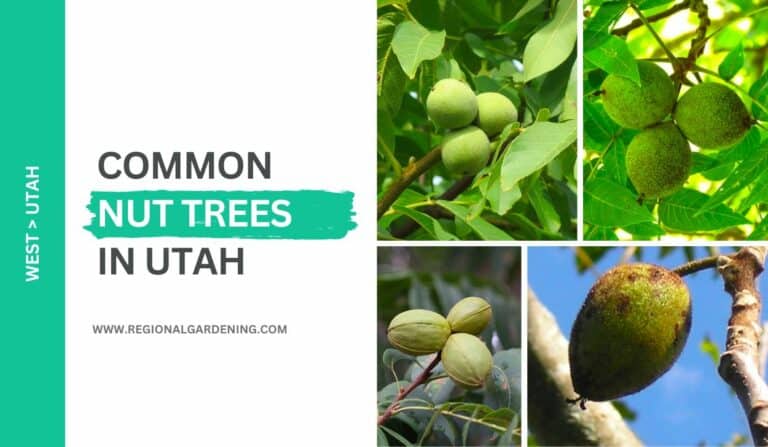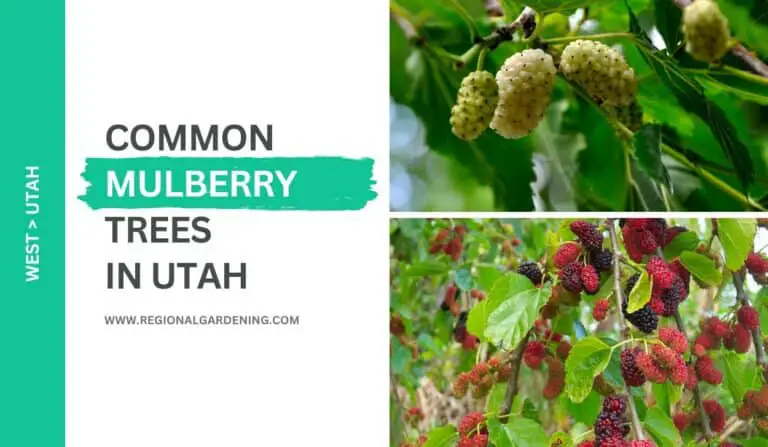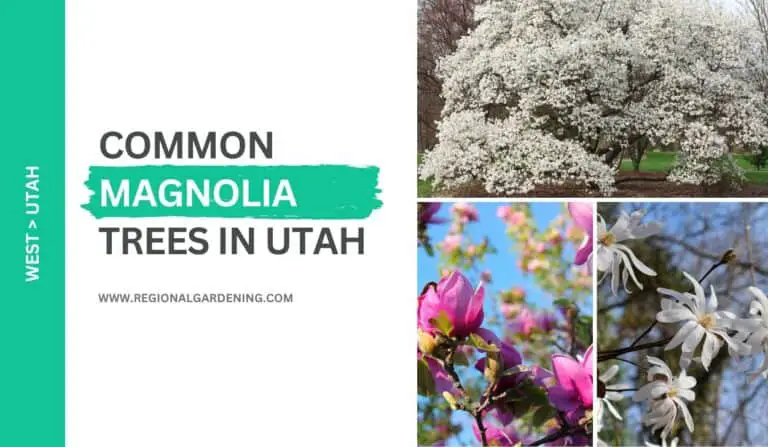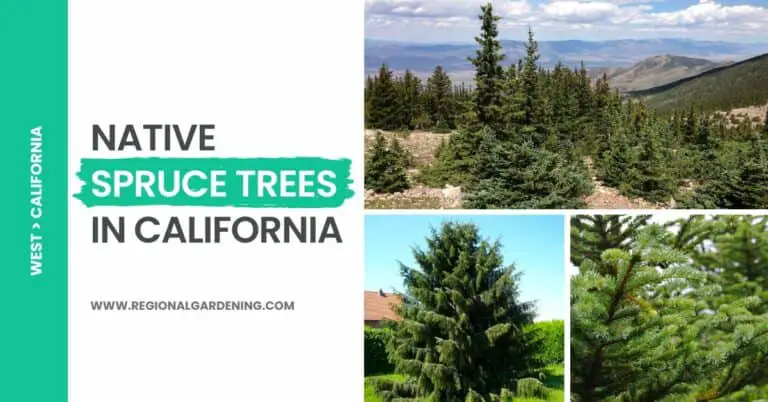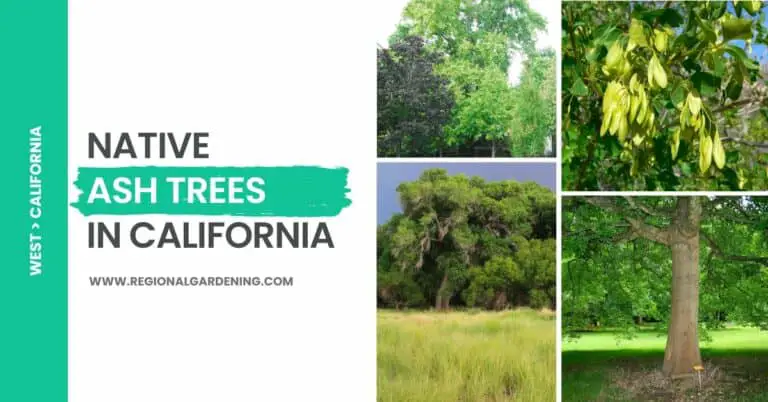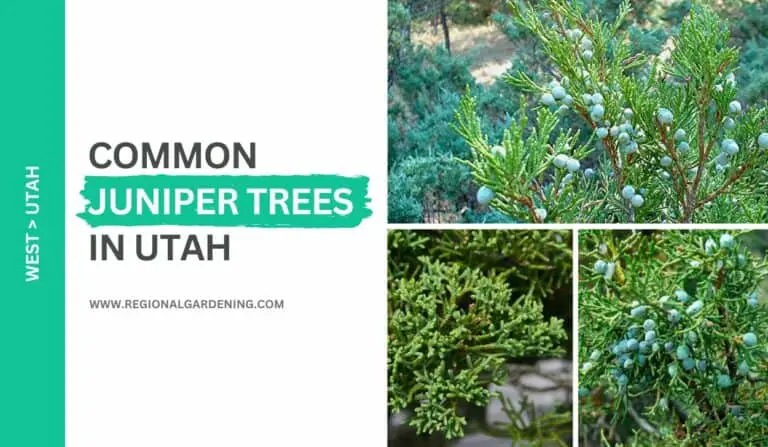3 Common Fir Trees In Utah (Native & Non-Native Varieties)
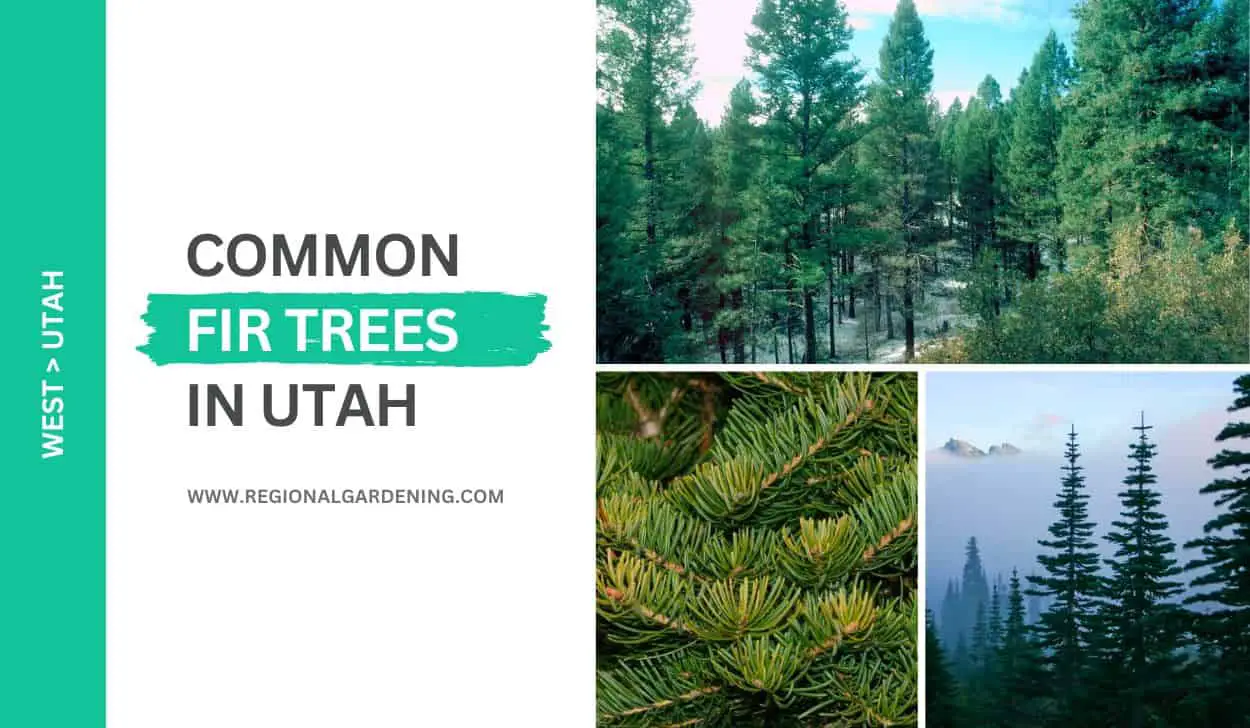
Fir trees are one of the most common coniferous trees in the Western world. Fir trees are members of the genus Abies, which contains 40 different fir varieties around the world. Only 9 of the 40 species are native to the United States, and only two are native to Utah.
The most appealing feature of fir trees is their leaves, also known as needles. They have flattened cross-sections, no sharp-pointed tips, live for 7 to 10 years, and are arranged individually on the twigs. They are known as friendly conifers because they do not have any sharp tips.
That is not all.
This article provides high-quality photos and detailed descriptions of the two native fir trees in Utah, the White Fir, and Subalpine Fir. Furthermore, we cover Douglas Fir, which is not a true fir but is considered among fir trees due to its close resemblance.
So, let’s get started.
1. White Fir
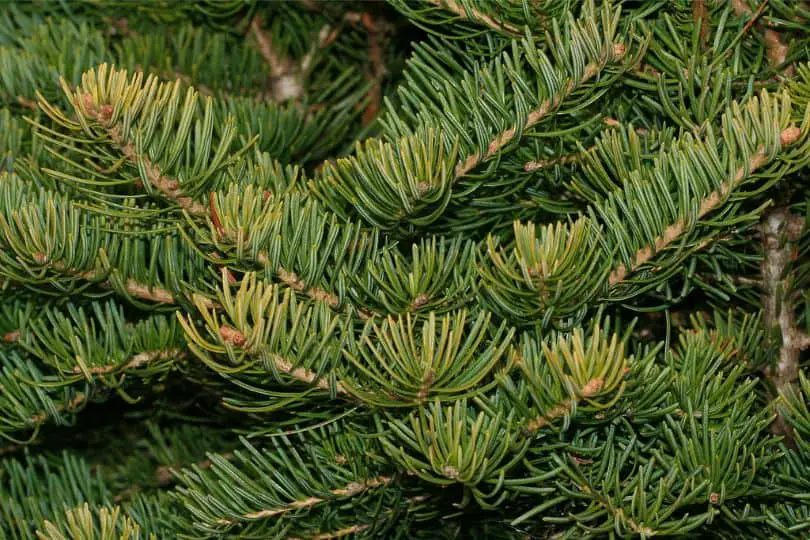
- Common Name: White Fir
- Scientific Name: Abies concolor
- Mature Height: Up to 100 feet
- Native/Non-Native: Native to central and southern Rocky Mountains, including Utah and California.
- Flowers/Cones: Cones, oblong shape, green to purple, borne upright on upper branches.
- Uses: Ornamental tree, provides shade, used for Christmas trees
The White Fir, also known as the Concolor Fir, is a stunning evergreen tree that can reach heights of 100 feet. The White Fir’s leaves have needles that are 2 to 3 inches long. They are flat and silvery-blue to silver-green in color.
White girl trees are the most beautiful varieties among the commonly found fir trees in Utah.
The White Fir has strong branches and twigs that range in color from yellow-green to brown-green. The buds are tiny, sticky, and yellow-brown in hue. White Fir cones range in length from 3 to 5 inches. Cones are oblong in shape and can be green or purple in color.
The White Fir’s bark is thin, smooth, and gray. The bark of the tree becomes wrinkled and ridged as it ages. White Fir wood is soft and brittle, and it can be white or yellow-brown in color. The wood has prominent growth rings.
The White Fir is found in the middle and southern Rocky Mountains, including Utah, as well as California. It favors moist and cool environments, but it can endure shade. It is not, however, suited for windy or exposed locations. Because of its attractive conical shape and blue-green leaves, the White Fir is frequently employed as an ornamental tree. It is occasionally confused with the blue spruce.
2. Subalpine Fir
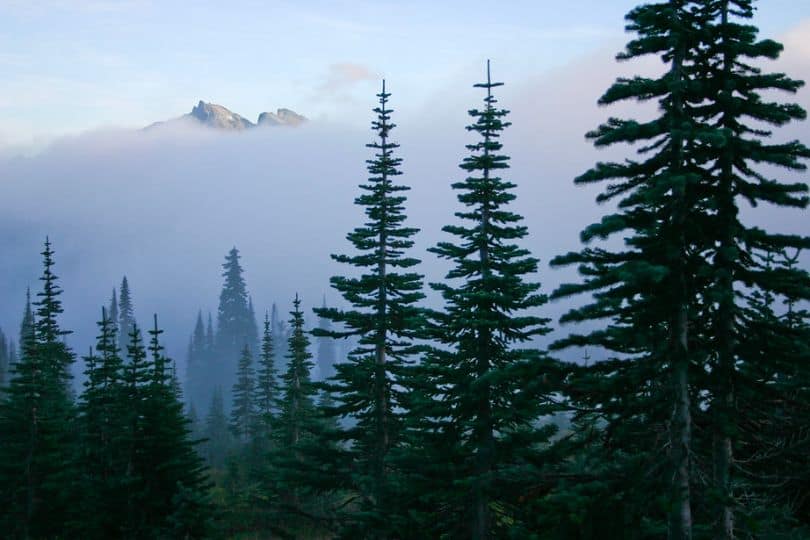
- Common Name: Subalpine Fir, Alpine Fir
- Scientific Name: Abies lasiocarpa
- Mature Height: 40-100 feet
- Native/Non-Native: Native
- Flowers/Cones: Cones
- Uses: Wood, landscape
The Subalpine Fir, often known as the Alpine Fir, is one of the most commonly seen native fir trees in Utah’s high-elevation region. This tree is native to chilly, wet areas and is commonly seen in forests alongside other coniferous trees.
The needles of the Subalpine Fir are long, bluish-green, flattened, and evergreen, which means they stay on the tree all year. The needles are 1 to 1-1/2 inches long and grow singly on the branches. This tree’s twigs are similar to those of the white fir, and the buds are orange-brown in color.
This tree bears cones that are 2 to 4 inches long. The cones are oblong in shape and can be green to purple in color. They are borne upright on the tree’s higher branches, and their scales are deciduous, which means they shed over time.
The Subalpine Fir’s bark is thin and smooth, with a gray tint. The bark of the tree becomes shallowly wrinkled as it ages. Resinous blisters, which are little raised lumps containing sap, can also be found on the bark. This tree’s wood is moderately valuable and similar to that of the white fir.
The Subalpine Fir is a shade-tolerant tree that grows among other conifers. It features a thin, spire-like crown with several leaders. Although it is not typically planted in Utah’s valleys, it may not thrive in hot, dry circumstances. When native trees, such as the Subalpine Fir, are present on construction sites, they are vulnerable to construction damage.
Overall, the Subalpine Fir is one of the lovely native fir trees in Utah that can be found in high elevations. Its distinct traits and adaptability make it an essential component of the forest ecosystem.
3. Douglas Fir
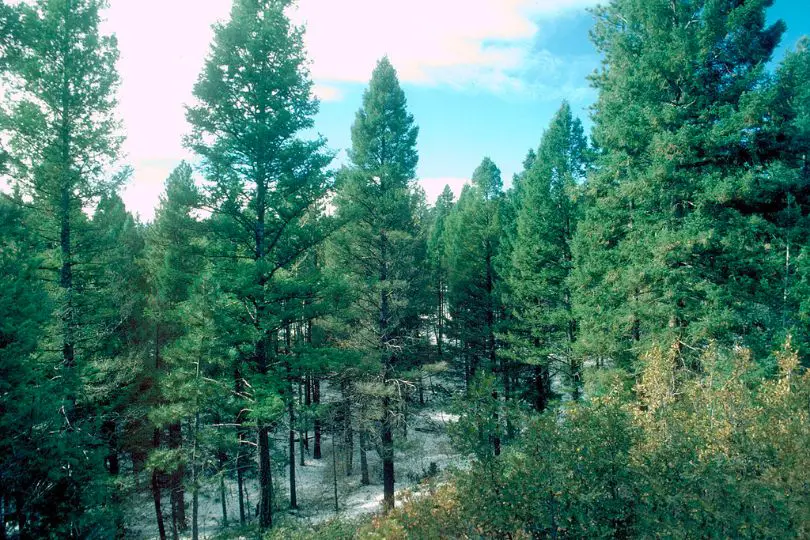
- Common Name: Douglas-fir
- Scientific Name: Pseudotsuga menziesii
- Mature Height: Can grow up to 250 feet tall
- Native/Non-Native: Native to the Pacific coastal states and Rocky Mountain states, including Utah
- Flowers/Cones: Produces thin-scaled cones that are about 3 inches long, with each scale having a 3-pointed woody bract attached to it
- Uses: For high-quality lumber and plywood
The Douglas-fir, scientifically known as Pseudotsuga menziesii, is among the tallest fir trees in Utah and can grow up to 250 feet. However, an amazing fact about this tree is that it is not a true fir but bears a strong resemblance to firs.
It has needle-like leaves that are roughly 1 inch long. These needles are flat, and blunt, and range in color from yellow-green to blue-green. The Douglas-fir is an evergreen tree, which means it preserves its leaves all year, and these leaves can last for 5 to 8 years.
Douglas-fir twigs are slender and flexible, with fine hairs covering them. When the leaves fall off, the twigs become smooth. Douglas-fir buds are cigar-shaped and sharp-pointed, measuring about 1/2 inch long and brown in color.
Douglas-fir trees also have fruit in the shape of thin-scaled cones. These cones are roughly 3 inches long and can dangle down. A 3-pointed woody bract is linked to each cone scale. Douglas-fir bark is smooth and gray-brown, with resin blisters forming on young trees. The bark of the tree grows rough and thick as it ages.
Douglas-fir timber is highly prized and used to produce high-quality lumber and plywood. It has distinct growth rings, with sapwood ranging from white to yellow and heartwood ranging from yellow to red in hue.
The Douglas-fir tree is endemic to the Pacific Coast and the Rocky Mountains, including Utah. It’s a tree that thrives in Utah’s valleys as long as it gets enough water. It is, however, rarely observed outside of its native mountain ranges.
Common Fir Trees In Utah – Frequently Asked Questions (FAQs)
Let’s take a closer look at some of the most frequently asked questions about commonly found native and non-native fir trees in Utah.
Do fir trees grow in Utah?
Fir trees can be grown in Utah. Several fir tree species can be found in the state, particularly at higher elevations in the mountainous regions. Subalpine fir, White fir, and Douglas fir are some of the most common fir tree species in Utah. These trees are well-adapted to Utah’s cooler climates and higher elevations, where they thrive in alpine and subalpine forests.
Where are fir trees in Utah commonly seen?
Fir trees in Utah are commonly seen in the higher elevations of the mountainous regions. They are commonly found in alpine and subalpine forests at elevations greater than 8,000 feet (2,400 meters). These forests can be found throughout Utah, particularly in mountain ranges like the Uinta Mountains, Wasatch Range, Tushar Mountains, and La Sal Mountains. Fir trees are a prominent component of the vegetation in these areas, forming dense forests with their distinctive evergreen foliage.
What are the common uses of fir trees in Utah?
Fir trees in Utah have several common uses. Timber production is one of the primary uses. The wood of fir trees is valued for its strength and durability, making it suitable for framing, flooring, and furniture production. Fir lumber is also used to make plywood, veneer, and other wood products. In addition to timber, fir trees are frequently harvested for Christmas trees.
During the holiday season, many Utah residents enjoy the tradition of selecting and decorating fir trees. Fir trees are also valuable ecologically because they provide habitat and food for a variety of wildlife species. Furthermore, their dense foliage contributes to the overall health and resilience of Utah’s forests by stabilizing the soil, preventing erosion, and providing shade.
Similar Articles
- Common Oak Trees in Utah
- Common Pine Trees In Utah
- Common Magnolia Trees In Utah
- Common Ash Trees In Utah
- Common Spruce Trees In Utah
- Common Elm Trees In Utah
- Common Birch Trees In Utah
- Common Poplar Trees In Utah
- Common Maple Trees In Utah
- Common Dogwood Trees In Utah
- Common Nut Trees In Utah
- Common Cedar Trees In Utah
- Common Willow Trees In Utah
- Common Alder Trees In Utah
- Common Cypress Trees In Utah
- Common Beech Trees In Utah
- Common Juniper Trees In Utah
- Common Plum & Cherry Trees In Utah
- Common Palm Trees In Utah
Sources
The Regional Gardening team makes sure that the information in our articles is accurate by only using sources that are known to be trustworthy. Some of these sources are peer-reviewed journals from government agencies, well-known universities, and scientific research organizations.
- Trees & Shrubs In Yard And Garden, Utah State University Extension
- Native & Non-Native Tree Identification, Utah State University Forestry Extension.
- Native Plants, Utah Native Plant Society.
- A Guide To The Trees Of Utah & Intermountain West, Book By Michael Kuhns, Utah State University Press.


